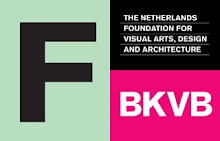Monday, December 13, 2010
Bili Bidjocka, Jengu Project
All springs run to the river
Bili Bidjocka has been hunting springs all over the city of Douala, wherever water springs and life spreads around it; he creates an itinerary that illustrates the continuous movement and connections that are normally invisible, beneath our steps; he explores a new interface that may enable us to become aware of and take part in the inner life of the city.
Bili Bidjocka is an artist from Cameroon who started and directed the Matrix Art Project Center of Bruxelles and who lives in Paris; his work has been exhibited in many personal and collective exhibitions among which “Africa Remix” as well as the Biennials of Venice, Dakar, Havana, Taipei.
Doual’art has commissioned the work produced by Bili Bidjocka on the theme of water, the heart and center of the reflection of the second edition of SUD – Urban Salon of Douala dedicated to public art which takes place in Cameroon from December 4th to December 11th, 2010.
For doual’art and for SUD Bili Bidjocka has produced a map exhibited on a large wall inside the Art Centre and a series of 180 flags placed both on the only bridge that crosses the river Wouri and near the springs identified during the preliminary research.
The map is a simple portrait of the city seen from above; a drawing on the wall with lines that follow the boundaries of the city. Light blue strings of thread lead the water towards the river and recreate the hair of Jengu. Jengu is the title of the work (Bili Bidjocka & Yves Makongo, Jengu Project Work in Progress: Do It Yourself, SUD 2010); Jengu is also the spirit of the river Wouri, a creature who, in popular tales, will appear either as a siren (like the famous Mami Wata who is part of the tradition of many African countries along the coast of the ocean) or as a small creature with fin instead of hands and feet. If the portrait of Jengu may change in each tale, the common element is represented by its long hair that seduces and captures human beings. This very hair, created with threads of water leading to the river, is the principal element of Bili Bijocka’s map. Douala seen from above through the eye of the artist, is a new portrait of Jengu, an imaginary portrait like all portraits of Jengu’s, an imaginary map like all maps on which symbols, which most viewers can interpret, evoke places.
The map, though, is no common representation of Douala: few of its over 4 million people use maps to surf through the city, few are familiar with air views or the symbols of geography maps.
That is why Bili Bidjocka speaks of real, hidden, imaginary and virtual places. The map, the flags and the research help the viewer to understand their own territory, but also to stop and observe, imagine or recall.
The research and spotting of springs has been carried out by the students of the Faculty of Geography of Douala University. They identified about twenty places in different areas of the city. “But springs are everywhere” – Bili Bidjocka says – “there are springs under homes, and here, and in a number of different places. My springs are both real and imaginary. On the map and on the flags I wanted to acknowledge the importance of springs that are known, but I also wanted to invent new ones because the work of research is a never-ending process.
Everyone may report the presence of other springs, take pictures and tell about them. Bili Bidjocka’s work is in progress and do it yourself, therefore, with the contribution of the community, who is invited to add to the research of new opportunities of access to water.
(text by Iolanda Pensa)
Labels:
Bili Bidjocka,
SUD,
SUD2010,
Water
Subscribe to:
Post Comments (Atom)











No comments:
Post a Comment